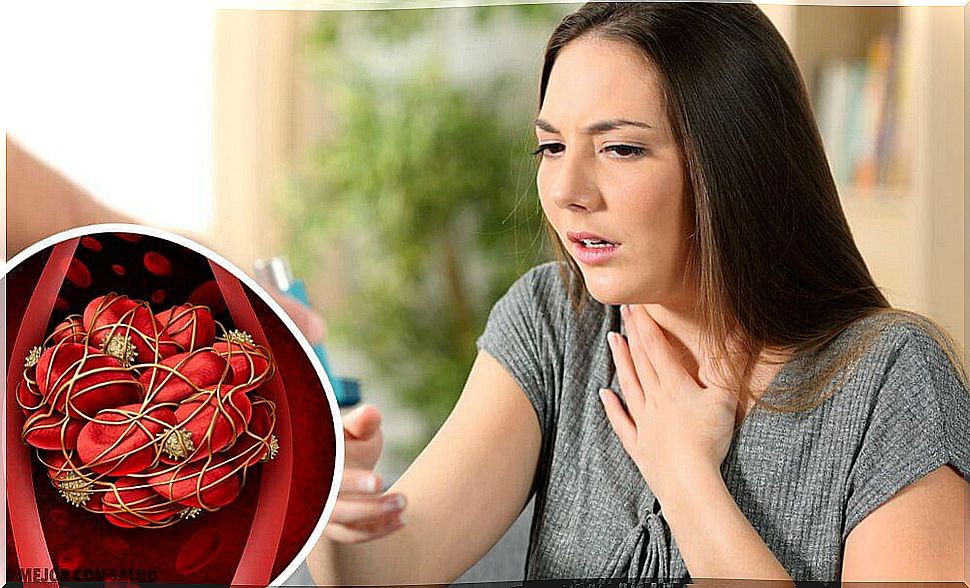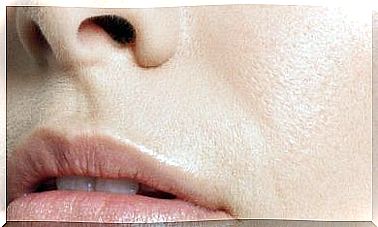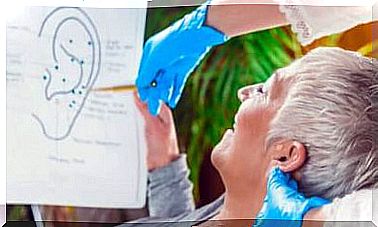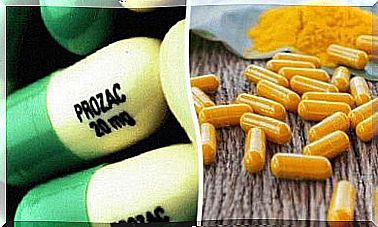Blood Clots: 8 Warning Signs
Clotting is important because it prevents you from losing blood when you have an injury or damage to your body.

When clots form in the blood vessels, health is threatened.
A clot is a mass of blood that changes its liquid state to a gelatinous or semi-solid form.
When this mass is detached, it can partially or completely block an artery or vein. It is called thrombosis.
Since our whole body is connected by blood vessels, a clot can travel anywhere, which is very dangerous.
If it is transferred to the heart, brain or lungs, it may get stuck and cause what is called an embolism or cardiovascular event.
There are two types of blood clots:
- Arterial. Those that form in the arteries and do not allow oxygen to reach major organs.
Clots cause countless complications such as heart attacks, strokes, nerve palsy, and severe pain. - Venal. They are formed slowly in the veins, so the symptoms are noticed gradually.
It is common for them to appear on the arms, legs and pelvis.
Usually, these clots remain immobile, but there is always the risk that they can move and thus become a health risk.
Risk factors for developing blood clots
Some of the situations that can increase the risk of blood clots are:
- The same position held for too long presses the blood vessels, which hinders blood flow
- Long trips of more than four hours are also causes of blood
clots.It happens because when you sit for a long time, the blood does not flow properly. - Long periods in bed or at rest
- Certain birth control pills
- Family history
- Physical inactivity
- Age
- Obesity
- Smoking
Signs you should pay attention to
1. Unexplained cough and shortness of breath

A clot in the lungs slows the flow of oxygen, which increases your heart rate.
Accelerated palpitations accompanied by difficulty in breathing are generally interpreted as a warning signal against pulmonary embolism.
2. Mood changes
Symptoms such as irritability, confusion, hallucinations or seizures may indicate that there is a risk of arterial thrombosis in the brain.
This happens when a blood clot blocks the steady flow of oxygen and glucose in the bloodstream, preventing the brain from functioning properly.
3. Fatigue

By having a blood clot, the body activates its defense organisms, which often causes fatigue and exhaustion.
The causes of fatigue are usually difficult to diagnose, so it is very important to always pay attention to other symptoms.
Many times you will feel fatigue for no apparent reason, sometimes it occurs even when you manage to get a full rest at bedtime.
4. Swelling in the extremities
This condition is known as deep vein thrombosis, which prevents the flow of blood through the circulatory system, and therefore oxygen from reaching the vital organs of the body.
You should be careful if the swelling in your limb develops quickly, especially when it is painful. Do not confuse it with inflammation linked to water retention.
5. Pain in the arm or leg
The pain is localized and throbbing. It happens many times when you walk or when you flex your limbs.
Sometimes it can be accompanied by a feeling of numbness.
6. Distended veins
Distended veins don’t cause major complications or problems, but when a clot puts pressure on the blood vessels, they can cause internal ruptures, redness, or bruising.
Sometimes varicose veins can appear as a result of venous thrombosis in the legs.
7. Red bands on the skin
When there are red patches or lines on the skin that develop along the veins, you should be aware of other changes in your skin.
The same precautions should be taken as with mood changes to rule out the possibility of arterial thrombosis. These spots will make the ends warm to the touch.
8. Fever
When a blood clot enters your bloodstream, it can cause a fever. This gene is usually accompanied by sweating, tremors, migraines, dehydration, body weakness, and poor appetite.
Recommendations for preventing blood clots
- Try to eat foods rich in vitamin B3, C, and E such as garlic, minerals, zinc, magnesium, manganese, and mineral supplements for good circulation.
- Stop smoking, as smoking increases the formation of blood clots
- Maintain a healthy weight, which is commensurate with the height, this can be achieved with physical exercise. Obesity and sedentary lifestyle are the main cause of cardiovascular accidents and heart attacks caused by the formation of blood clots which rupture in the bloodstream
- Be careful if you are taking birth control pills as the hormones increase blood clotting









